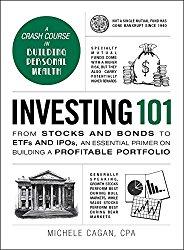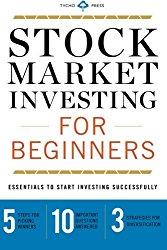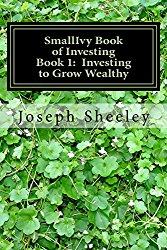Congratulations – you are now a pension fund manager. There is only one person in your pension plan, but that person is very special – you. If you are working for a company with a 401k plan, ready or not, you are now the manager in charge of your pension plan. Do it well and you’ll come out way ahead of where you would have in a traditional pension plan. Do it poorly, and it will be a long, cold retirement. Unfortunately, you can’t sue the pension plan manager for mismanagement, so take a few minutes to learn at least the basics. It really isn’t very hard (believe it or not).
Interested in learning how to invest in individual stocks? A SmallIvy must-read is JD Spooner’s Do You Want To Make Money Or Would You Rather Fool Around?
The dirt simple method:
The easiest method of investing your 401k assets will provide a reasonable return – better than a traditional pension plan – and take only a few minutes one time to implement. Here’s the recipe:
- Look through your 401k investment options and look for a target date retirement fund. These will normally include words like “target” in the name and have a year in their title. For example, the Vanguard Target Retirement 2020 fund is one of these funds.
- Find a fund with a date near your retirement age. For example, if you’re 20 today, pick one 50 years into the future, so either a 2070 fund or a 2065 fund.
- Direct all of your investments into this fund.
- Go off and have a cold beverage of your choice. You’re done.
- Look at your statements maybe every five years or so.
Why this works: A target-date fund automatically shifts investments as you age, going from more aggressive investments when you’re young to more conservative investments when you’re older. Theoretically, the fund managers should just take care of everything for you, which is why they’re called one-decision funds.
Why you can do better: Unfortunately, one-decision funds are not always set up optimally. (Notice that I didn’t say they were set up “wrong.” I said, “not optimally.”) Investing in one is far better than putting your money in the money market fund where it will lose money each year if you include inflation in your calculations, but you will not get the returns you will get by allocating the funds optimally on your own. These funds also vary in their investment allocations by fund company, with some being too conservative and some being too aggressive.


Great beginner investment guides.
The simple but not dirt-simple method:
If you want to get better returns, but still not spend much time or learn very much, do the following:
- Figure out your allocation between growth investments and income investments. Do this by setting your income allocation equal to your age minus ten, and your growth allocation equal to 110 minus your age. For example, if you’re 25, your income allocation would be 25-10 = 15% and your growth allocation would be 110 – 25 = 85%.
- Invest your income allocation in a bond fund that covers as much of the market as possible. For example, the Vanguard Total Bond Market Fund, which invests in bonds that come due over a variety of time periods, would be appropriate. If you were 25, you would set up your 401k to put 15% of your contributions into the bond fund.
- Invest the rest in a broad market stock fund. For example, the Vanguard Total Stock Market Fund, which invests in all kinds of different companies, would be appropriate. A twenty-five-year-old would put 85% in the stock fund.
- Go off and have your favorite frosty beverage.
- Look at your statements every five years to see how you’re doing. Adjust your holdings as needed as you age to keep your age minus 10 in bonds and 110 minus your age in stocks. For example, at age 30 you would have 20% in the bond fund and 80% in the stock fund. You would need to both move money between funds and change how new investments are invested. Many mutual funds have online tools to do this in a couple of clicks.
Why it works:
When you invest in stocks, you make money when the company grows and eventually pays a dividend. Because you’re depending on the growth of the company, returns are more sporadic than they are with things like a bank account that pays a predictable interest rate. When companies do grow, however, the rate of return is much higher than it is with interest-bearing assets (because you’re taking on more risk). Over long periods of time, if you invest in a lot of different stocks, you’ll get market returns which have averaged between 10 and 15% over the last 100 years when assets are held for long periods of time (like 25 years). As you get closer to retirement, you shift to interest-bearing assets like bonds and real estate that have a more predictable return, which helps reduce the severity of declines, but which return less. You therefore start out mostly in stocks when you’re young and can afford to go through a big market decline since you can wait for good times to return (plus, you have little money invested), and then shift to bonds when you get older to reduce the volatility (how much your portfolio value goes up and down) since you need more security at that point in your life.
Why you can do better:
Only looking at your portfolio every five years and adjusting your investments will mean that your allocations may get a little skewed until you finally adjust how the money is invested. For example, if stocks do really well but bonds lag, you may end up invested in a larger proportion of stocks than you should be, which means you’ll get hit harder during a stock market decline than you would be if you had the right amount of bonds.

Want all the details on how to invest to amplify your wealth? Try The SmallIvy Book of Investing.
The slightly harder than the simple method for those who can turn off Netflix for an hour a year
Rebalancing, which is what you’re doing when you adjust the amounts invested in stocks and bonds in step 5 of the Simple Method, should really be done about once per year, but no more often than twice a year. To improve your returns a little more with the simple method, instead of looking at your portfolio only every five years and rebalancing, rebalance once per year. Keep in mind while it is very unlikely that you’ll see a decline in your portfolio over a five-year period, you may very well see one over one year. Just realize you’re able to buy more shares with the money you have when prices go down and stay the course.
Why it works:
By rebalancing once per year, you automatically sell what did well during the last year and buy what did poorly. This means you’re taking profits when things go up and are likely relatively expensive (and therefore may decline in price or just not go up as fast during the next year), and buy things when they’ve gone down in price and are on sale. You only want to rebalance once a year or so since doing so too often will mean you may sell at the beginning of a big rally. Stocks and bonds tend to have what is called momentum, meaning that when they are going up, they tend to keep going up for a while and vice-versa. Rebalancing too often will mean you’ll miss this momentum.
Why you can do better:
Investing in the whole US market in stocks and bonds is good, but adding other kinds of assets can improve your returns even more. In addition, by skewing your investments towards other asset types, like small stocks which have more room-to-grow than big companies, you can get a little better return.
In the next post, we’ll go into some ways to get that little bit extra out of your 401k portfolio if you’re willing to just do a little more.
Have a burning investing question you’d like answered? Please send to [email protected] or leave in a comment.
Follow on Twitter to get news about new articles. @SmallIvy_SI
Disclaimer: This blog is not meant to give financial planning or tax advice. It gives general information on investment strategy, picking stocks, and generally managing money to build wealth. It is not a solicitation to buy or sell stocks or any security. Financial planning advice should be sought from a certified financial planner, which the author is not. Tax advice should be sought from a CPA. All investments involve risk and the reader as urged to consider risks carefully and seek the advice of experts if needed before investing.
